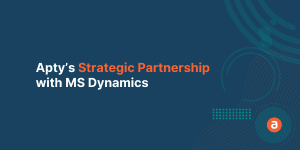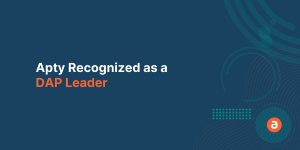We’re so dependent on technology and software to power our businesses that it is almost impossible to imagine a time when this was common. But for all the time and money spent on the R&D, there often remains a gap between the capabilities of the application deployed versus the value generated from it.
Think about this, for example.
17% of the major IT implementations go so wrong that they put the existence of the company at risk.*
For instance, In 2001, Nike spent $400 million updating their ERP and overall supply chain. The goal was to reduce the manufacturing cycle to match the increasing demands on time. They launched a new demand-planning solution with minimal testing and consequently, the solution failed miserably in the real environment.
It cost them $400 million on its software failure with an additional $100 million in revenue and another 5 years to get the implementation right.
A successful software implementation plan begins with getting a granular understanding of how you define success. It is possible by identifying the challenges that could put the projects at risk and then deciding where the business wants to go with the implementation. These factors will not only help the organization to avert risks but also determine the success of the overall business.
What is Software Implementation?
Software implementation is a process of adopting and integrating software or an application into a business process.
It enables organizations to optimize their existing processes, enhance user experience and achieve higher efficiency levels. Regardless of how big or small the software implementation, it will have a significant impact on the bottom line.
It is wise to acknowledge that most implementations are challenging but they can also significantly fuel the growth of the organization. At first, it could look daunting but successful implementation will enable you to reap the benefits – both from a people and a financial standpoint.
5 Software Implementation Challenges
- Misaligned expectations
- Data Maintenance
- Lack of readiness
- Internal resistance
- Improper post-deployment planning
1. Misaligned expectations
When planning software implementation, the organization needs to assemble a project team that involves a variety of stakeholders who will drive the software deployment in the right direction.
The team usually consists of product managers, project heads, team leads, business analysts and subject matter experts. This team coordinates with the vendors, service partners, implementation experts, consultants, and developers.

Each implementation is different and, in some cases, the software cannot be customized to your specific business needs. In this case, service partners should provide a realistic assessment that ties back to the organization being encouraging transparency so that all stakeholders can be informed about the limitations of the project.
With any software implementation, not all expected functionalities can be realized. Be it internal or external stakeholders, clear communication is a must during the planning and implementation phase to have the right expectation from the project.
2. Data Maintenance
Poor data could cripple any business. To put this seemingly obvious phrase in perspective, consider this – On average, organizations lose $15 million per year because of poor data quality.
This will prove to be worse when businesses implement multiple software simultaneously, which will only add to the complexity. Companies that operate in multiple geos stand the risk of facing severe data quality issues.
Ensuring data integrity and maintaining it throughout the process will be crucial for success. It is important to know what kind of data can be passed through the system and what cannot.
This will help you to not only map the system correctly but will also ensure that no data loss occurs during the process and it is secure at all times.
Another problem that stands in the way is forgetting to map data that is necessary for the business. Just imagine during the migration process if the organization forgets to fetch data of a potential customer! This could potentially cost the company millions of dollars, if not more.
3. Lack of readiness
Every member of the implementation team must understand their role and should represent their respective department or team and create a plan that puts the best interest of their team and that of the organization.

It is also important to define when and how support from the vendor would be provided. The team should focus on identifying the gaps and issues that users might face, post the software deployment. It can be achieved by having a robust communication plan which should include several channels to reinstate the information.
All this will help you to overcome user adoption challenges and ensure software implementation success.
Pro tip: Apty comes with an in-built announcement feature that not only informs your employees about the changes within the software but also guides them from there on how to complete their tasks within that software.
4. Internal resistance
New software brings an environment of uncertainty with it. It could make your employees uncomfortable about the change because they don’t know what to expect.
It is critical to clearly demonstrate well in advance the advantages of using the new software. This helps with easing them onto the new software and getting their buy-in, allowing the organization to have addressed any issues that come up, in advance. It also helps them to understand and experience for themselves how the software will empower them to do their job efficiently.
5. Improper post-deployment planning
Typically, organizations use a variety of tools and frameworks to support software implementation and increase the chances of success.
It starts with planning the onboarding and then a training program to ensure software implementation success. While this approach is correct, the journey towards a successful implementation will be short-lived, unless a software adoption strategy is in place.
A Digital Adoption Platform helps you to plan onboarding, training, and software adoption which will help in making the overall software implementation a success, even after the deployment phase.
5 Steps to Creating a Successful Software Implementation Plan
- Define the scope of the project
- Define roles and ownership for the process
- Test the software
- Stitch a structured training program
- Focus on software adoption
i. Define the scope of the project
The first problem is that enterprise software is decorated with a lot of features and can entice leaders to use all of it to maximize the impact. But this can also potentially derail the original vision and you might find yourself trapped in feature hell.
Another problem is customization. Some businesses have complicated and unique processes. The focus should be to optimize the processes and keep them as simple as possible, as there are several technical difficulties involved in revamping an application.

To counter all these issues, it is a must to centralize all the documents and provide vendors with a clear picture of what the organization wants to achieve. This will help the vendors to give their honest opinion of the scope of the project.
The documentation mentions the primary goals and in a way, freezes them so there are no distractions. Isolate the original vision from the new ideas as mixing it could cause scope creep. Add these new ideas in another document and consider them during the subsequent iterations.
It enables the project team to focus on the project at hand. It pays to invest in a project management tool that will help to achieve your goals in the shortest period and keep a track of all the changes made during the process. This type of approach keeps the software implementation on track.
ii. Define roles and ownership for the process
Having the right team will determine the success of your entire implementation. Start by analyzing the number of departments or business units that will end up using the new software. Then, chalk out the specific requirements of each team within that unit.

With this, the organization will know the number of people who will be affected by the implementation. Involve at least one stakeholder from each department who will act as a representative of their business unit and the business case of their respective group. They can also be the core team if the implementation is not in line with their department requirements.
Apart from these representatives, the project team must include:
- Project Owner: They are the departmental heads who can also be a group of executives. The job of representative and project owner is taken care of by business unit managers or heads.
- Project Manager: They handle the budget and systematically organize the whole implementation process.
- System admin: This could be one person or a group of people depending entirely on the scale of the project. Their job is to create, organize and manage the technical setup.
- Delivery owner: The person who acts as a communication channel between the project team and vendors.
Having the right mix of people will help in gaining different perspectives but remember the saying “too many cooks can spoil the broth”? It’s true even with this. You can assign more than one role to the same person – the only criterion is that they are equipped with all the skills required and understand the importance of the implementation.
iii. Test the software
Conduct a thorough software testing by considering every business scenario possible and checking its efficacy.
During this phase, involve the project team as well as the end-users and maintain a checklist that the deployment should pass on.
If some issues are uncovered during the testing phase, then a complete software configuration before the go-live is a must.
In previous steps, check the system readiness in a control group as it will help you to immediately track back the source of the problem.
iv. Stitch a structured training program
Training and onboarding programs are the hidden forces that ensure a successful software implementation.
These programs must be created before even deploying the software. It is advisable that you work in tandem with the L&D team to stitch a customized training and onboarding program for every business unit.

Each department has specific needs and their learning material should cater to those exact needs, without being generic. They need to be trained on how to navigate through the software in a way that helps them accomplish their specific tasks on time.
A customized program enhances the employee experience and will help them to get up to speed in record time.
The program should also focus on reducing the load on the support team by deploying tools like a Digital Adoption Platform. A DAP sits right inside the application and acts as a repository of information containing videos, pdfs, knowledge base links, and walkthroughs. It guides the employees at the point of need, without being intrusive.
It also helps the L&D teams to reduce their content creation time as the walkthroughs can easily be created and converted into several other formats with just one click.
v. Focus on software adoption
Enterprise applications are becoming unimaginably intuitive but with increasing business processes, the complexity still prevails. To counter this, organizations must look beyond training and onboarding by creating a cohesive digital adoption strategy.
Irrespective of how great the software is, if it is not used effectively then the whole implementation will prove to have been futile.
It is in the interest of the organization to keep employee engagement at the heart of its software implementation.
The ultimate aim of any software implementation is to achieve business goals in a short period and make the workforce productive.
For example, if the call logs from the sales team are far less than the opportunity entries, then the organization will want to improve the call log process in the CRM system.
But unless you quantify it, measuring the impact is impossible. A Digital Adoption Platform helps you create goals and set a deadline against them.
Let’s say you want all the sales reps to enter that data within 20 days and 50% should complete it by 12 days.
This can be tracked in a DAP, which helps you send a notification to each user segment that is falling behind the deadline. It will help you to ensure the successful adoption of software at a functional level and ultimately, lead to successful software implementation.
A Digital Adoption Platform is the need of the hour for any enterprise, irrespective of where you are in the software implementation journey. From strategizing to guiding users to improving the process, a DAP does it all allowing you to save millions of dollars and man-hours.













